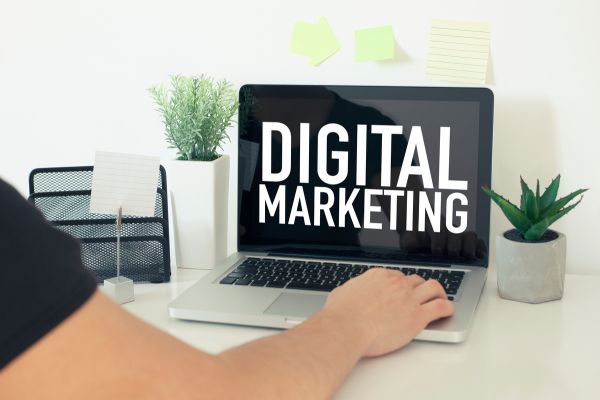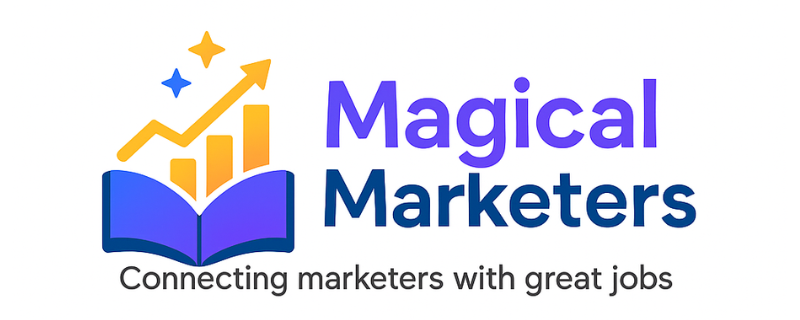How to Build an EdTech App?

The education landscape has transformed dramatically in recent years, with technology playing a critical role in reshaping how students learn and teachers teach. EdTech (Educational Technology) apps are at the forefront of this change, offering personalised, interactive, and flexible learning experiences. If you’re thinking of building an EdTech app, you’re tapping into a growing market expected to reach $404 billion by 2025.
Creating an EdTech app can seem daunting, but with the right steps and approach, you can develop an app that not only addresses educational needs but also succeeds in the competitive market. In this guide, we’ll take you through the process of building an EdTech app—from idea generation to launch—and cover how partnering with an app development company can help bring your vision to life.
Step 1: Define Your Purpose and Audience
The first step in creating a successful EdTech app is clearly defining what your app will do and who it will serve. The education sector is vast, encompassing learners from early childhood to adult education, as well as catering to teachers, administrators, and even corporate training.
Questions to Consider:
● Who is your target audience? Are you building for K-12 students, university students, teachers, or professional learners?
● What problem will your app solve? Whether it’s offering interactive content, providing virtual classrooms, or enabling better teacher-student communication, you need to identify the core problem your app addresses.
● What is your value proposition? Clearly outline how your app will make learning easier, faster, or more engaging than current solutions. For instance, will it offer gamification, AI-based personalised learning, or progress tracking?
By pinpointing your audience and the problem your app solves, you’ll ensure that your development process stays focused and aligned with real educational needs.
Step 2: Conduct Market Research
Before jumping into the development phase, it’s crucial to understand the current market landscape. Conducting thorough research will help you identify gaps in the market, understand your competition, and avoid common pitfalls.
Key Areas to Research
● Competitor Analysis: Look at successful EdTech apps such as Duolingo, Coursera, or Khan Academy. What features do they offer, and how do they market themselves? Understand their strengths and areas for improvement.
● Market Trends: Identify key trends in EdTech, such as the rise of microlearning, gamification, and AI-driven personalised learning. For example, 90% of students report that gamified content is more engaging, making gamification a critical trend to consider.
● Target Audience Feedback: Directly engage with potential users—students, teachers, or parents. Surveys and focus groups can provide valuable insights into the features and functionalities they would like to see in an app.
This research will help you build an app that not only stands out but is designed to meet actual user needs.
Step 3: Choose the Right Features
Now that you have a clear understanding of your audience and the market, it’s time to decide on the key features of your EdTech app. The features you choose will directly influence your app’s usability, engagement, and success.
Essential Features for an EdTech App
- User-Friendly Interface (UI): The design should be intuitive and easy to navigate for users of all age groups, including students, teachers, and parents.
- Interactive Learning Tools: Incorporate interactive elements like quizzes, flashcards, and games to make learning engaging. Studies show that interactive learning can improve retention rates by 50%.
- Personalised Learning Paths: Utilise AI to create tailored learning experiences based on a user’s strengths, weaknesses, and progress.
- Progress Tracking: Enable students to monitor their progress through dashboards that display grades, course completion, and areas of improvement.
- Live Classes and Webinars: Video integration for real-time lessons can make learning more dynamic. Platforms like Zoom and Microsoft Teams have popularised this feature during the pandemic.
- Multimedia Content: Integrating videos, audio, and graphics can enhance the learning experience, catering to different learning styles.
- Offline Access: Ensure that users can access content offline, which is especially crucial in regions with limited internet connectivity.
The combination of these features will help make your EdTech app versatile and engaging, ultimately keeping users motivated to learn.
Step 4: Select the Right Tech Stack
The tech stack you choose for your EdTech app will determine its performance, scalability, and flexibility. Here’s a basic overview of the technologies commonly used in app development:
Front-End Development
● Languages: HTML5, CSS3, JavaScript.
● Frameworks: React Native, Flutter, Angular.
● Mobile Platforms: Ensure compatibility for both Android and iOS devices.
Back-End Development
● Languages: Python, Java, Node.js.
● Databases: MySQL, MongoDB, Firebase for real-time data.
● Cloud Services: AWS, Microsoft Azure, or Google Cloud for scalable server infrastructure.
AI and Machine Learning Integration
● Use frameworks like TensorFlow or Keras for AI-based features such as personalised learning paths or intelligent tutoring systems.
Security
EdTech apps often deal with sensitive data, such as student information and test scores, so security is paramount. Implement end-to-end encryption, secure logins, and regular security audits to safeguard your app.
Make sure to choose a tech stack that aligns with your app’s functionality and growth plans. A scalable and secure infrastructure ensures long-term success.
Step 5: Design an Engaging User Experience (UX)
The user experience (UX) of your EdTech app is crucial. A poorly designed app will result in low engagement and high dropout rates. On the other hand, a smooth, intuitive experience will encourage users to return and interact with the platform regularly.
Key Considerations for UX
● Simplicity: Don’t overwhelm users with complex navigation. Keep the interface simple and the learning flow straightforward.
● Consistency: Ensure that elements like buttons, icons, and menus are consistent throughout the app.
● Gamification: Gamified elements like badges, leaderboards, and rewards can motivate users to engage with the app. Gamification can increase user activity by up to 80%, making it a vital UX strategy.
● Feedback Mechanisms: Provide instant feedback to users after completing lessons or quizzes. This helps learners understand their performance and areas of improvement.
Additionally, design the app to be responsive on different devices, including tablets, smartphones, and laptops, to cater to various user preferences.
Step 6: Develop the App
Once the planning, research, and design are completed, it’s time to move to the actual development phase. Depending on the complexity of your app, this step could involve multiple stages, including coding, testing, and bug fixing.
Key Phases in App Development
- Prototyping: Create a prototype or wireframe to get a basic visual representation of your app. This will help you refine the design before development begins.
- Front-End Development: Develop the user interface and user interactions. Ensure all the front-end elements align with your design goals and deliver a seamless experience.
- Back-End Development: Focus on the server, database, and application logic. Ensure that data is handled securely and efficiently.
- Testing: Conduct rigorous testing for usability, performance, and security. Bugs and glitches should be fixed before the app is launched.
- Beta Testing: Before launching to the public, consider beta testing with a small group of users to gather feedback on the app’s performance and usability.
At the development stage, collaboration between designers, developers, and testers is crucial to ensure that everything runs smoothly.
Step 7: Launch and Promote the App
Your app is now ready for launch. However, to ensure it reaches the right audience, you need a solid marketing and promotion strategy.
App Store Optimisation (ASO)
Optimise your app’s title, description, and keywords on app stores like Google Play and Apple’s App Store. Positive reviews and high ratings can boost your app’s visibility.
Social Media and Influencer Marketing
Promote your app on social media platforms like Instagram, Facebook, and LinkedIn. Collaborate with influencers in the education space to generate buzz around your app.
Content Marketing
Start a blog or YouTube channel that provides valuable content related to education, such as study tips or exam preparation strategies. This can drive organic traffic to your app.
Paid Advertising
Consider running ads on platforms like Google Ads and Facebook Ads to attract users who are actively looking for educational solutions.
Step 8: Monitor, Maintain, and Update
Once your app is live, the work doesn’t stop. Constant monitoring and maintenance are crucial to keeping your users engaged and ensuring that the app continues to function smoothly.
Track Key Metrics
● User Retention: Measure how many users continue using your app after their first download.
● Daily Active Users (DAU): Track how many users are actively engaging with your app on a daily basis.
● Feedback and Reviews: Keep an eye on user feedback and app store reviews. Address any complaints and implement suggestions to improve the user experience.
Regular Updates
Technology and education trends change over time, so your app should evolve too. Regularly update the app with new features, bug fixes, and enhanced security measures to stay competitive and offer an improved experience.
Step 9: Work with an App Development Company
While building an EdTech app from scratch is a rewarding experience, the process is complex and often requires specialised skills. If you’re not a developer or don’t have a team in place, partnering with an app development company can be a game-changer. These companies have the technical expertise, resources, and experience needed to bring your vision to life.
Why Work with an App Development Company?
- Expertise: An experienced development company has the knowledge and expertise to build robust and scalable apps tailored to your specific needs. Whether you want to integrate advanced features like AI or virtual classrooms, they can handle the technical complexities.
- Time-Saving: Building an app in-house can take months, or even longer, if you lack the right skills. Working with a development company can significantly reduce development time, allowing you to launch faster.
- Cost-Effective: While outsourcing may seem expensive upfront, it’s often more cost-effective in the long run. Development companies can help avoid costly mistakes and ensure your app is built correctly from the start.
- Ongoing Support: Most app development companies provide ongoing support for bug fixes, updates, and scaling. This ensures your app remains functional and competitive in the long term.
How to Choose the Right App Development Company
● Portfolio: Review the company’s previous work, especially any projects related to EdTech. This will give you an idea of their expertise in the education sector.
● Client Reviews: Look for reviews or testimonials from past clients to gauge the company’s reliability and professionalism.
● Communication: Effective communication is key to any successful project. Choose a company that values transparency and keeps you updated throughout the development process.
By partnering with a professional app development company, you can focus on what you do best—creating great educational content—while they take care of the technical side.
Conclusion
Building an EdTech app is an exciting venture with the potential to transform how people learn and teach. From defining your audience and researching the market to selecting features and launching your app, every step is crucial to ensuring its success.
While you can choose to develop your app in-house, working with an app development company can streamline the process, reduce costs, and ensure that your app is built to the highest standards. With the right strategy and partner, your EdTech app can make a lasting impact in the world of education.
Are you ready to start your EdTech app journey? Consider reaching out to an experienced app development company today and turn your vision into a reality.
Calling all Marketers!
🔴 Are you tired of searching for the perfect job?
Whether you're into content writing, SEO, social media, graphic design, or video editing—full-time, freelance, remote, or onsite—we've got your back!
👉 We post over 30 job opportunities every single day. Yes, every day (all verified).
Join the most reliable and fastest-growing community out there! ❤️
And guess what? It’s FREE 🤑
✅ Join our WhatsApp Group (Click Here) and Telegram Channel (Click Here) today for instant updates.






